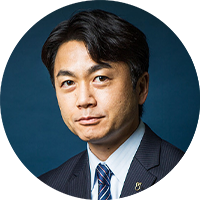Coach's VIEW is a business column authored by executive coaches in COACH A, aimed at providing valuable insights and effective approaches for leveraging coaching to foster organizational and leadership development. The column draws on the latest coaching trends and data, as well as insights from notable global publications on coaching.
Coaching Problem Solving vs. Coaching People Transformation

Many coaches practice coaching with the goal of helping individuals reach their full potential. As a mentor to these coaches, I have noticed that in many coaching sessions, the focus is often placed on addressing the challenges that clients have already created in their minds, rather than proactively maximizing their potential.
Today, we will explore what it means to provide coaching that truly maximizes a client's potential through specific examples of approaches that can be used in coaching sessions.
Coaching Topic
Let me provide you with a real-life example that illustrates this concept.
Here is Steve, a client responsible for a business unit. In his coaching session, he discusses an issue he is facing, which is the need to collaborate with his colleague, Brian, from another business unit. Steve explains that they have different views on how to approach business collaboration, and as a result, they haven't been able to make any tangible progress so far.
Now, let's explore three different approaches that can be used to address this situation.
Approach 1
The coach works with Steve using a set of questions as below. The questions include:
- How do you think you should work with Brian?
- What is Brian's perspective on business collaboration?
- What are the differences in your and Brian's perspectives?
- Imagine an ideal collaboration between you and Brian. What does it look like?
- How can you bridge the gap between your perspectives?
Now, let's take a moment to review this approach. How would you assess the effectiveness, potential, and limitations of using these questions in coaching? Based on my experience mentoring coaches, I have observed that this approach is a common pattern in coaching sessions.
The potential of this approach can be summarized as follows:
- Sorting out client's ideas through questioning
- Clarifying ambiguities in the client's thinking
- Helping the client identify their next action
Coaches who adopt this approach often reflect on the following challenges:
- Insufficient time to listen to the client's situation carefully
- Imposing their own ideas during the coaching process
- Struggling with the desire to solve the problem for the client
With this approach, clients may feel that although their issues have been addressed, they are not fully satisfied with having their real concerns truly heard.
Now, let's move on to the two other approaches.
Approach 2
The coach coaches Steve by asking him the following questions:
- How have you dealt with this subject before?
- What assumptions have influenced the choices you've made?
- How do you currently feel about the belief or idea you mentioned earlier?
- What specific aspect would you like to concentrate on during our session today?
With this approach, the client might begin to tell the coach the following story.
"This has been happening repeatedly for the last six months. I don't know a lot about how Brian operates, and I prefer to keep him away from my own business unit. Honestly, I'm hesitant to get involved in each other's operation."
Based on the client's response, it seems that the coaching could generate a shift from business collaboration to Steve's ability to navigate conflicts of interest and interact with others. The coach can help Steve explore and come to terms with his true topic during the coaching process. This might involve generating a sense of awareness and understanding around his underlying challenges and helping him develop strategies to address them effectively.
Approach 3
There is also an approach for the coach to further deep dive into the core of the issue with Steve. Let's address Steve the below questions and explore the differences between the approaches.
- As I listened to you, the image of "Two leaders looking straight at each other while feeling the presence of each other on their shoulders" came to my mind (the coach). What thoughts come to mind when you hear this image of mine?
- What questions does your chosen topic pose to you today?
- What kind of assumptions and beliefs would you like to reconsider during our discussion?
Now, let's analyze the differences between Approach 1 and Approaches 2 & 3.
Although they are only a few questions, you may have felt that the angle of each question was different in 2 & 3 as compared to 1.
In coaching sessions with more experienced coaches, I have encountered similar situations where I was prompted to examine my own assumptions right from the beginning. These experiences often involve a rapid exploration of my mindset, almost like asking myself, "Who am I?". It's like uncovering the underlying issue that exists within the person's mind. To summarize, let's compare the differences between Approaches 1, 2, and 3.
Approach 1 appears to be a problem-solving approach, assuming the issues described by Steve and focusing on finding solutions for them. On the other hand, Approaches 2 and 3 concentrate on understanding Steve's background and the assumptions that led him to the issues he discussed. These approaches prioritize exploring his underlying assumptions and beliefs.
Interestingly, what was considered an issue in Approach 1 is not perceived as an issue in Approaches 2 & 3. This is because the coach in these approaches recognizes that the challenge for Steve is actually created by his own assumptions and mindset. In refining Approaches 2 & 3, I believe that coaching can bring about a transformative effect on the client and suggests a practical action that can be taken to maximize their potential.
Now, let me introduce two questions proposed by Marion Franklin, MS, MCC, an experienced coach who has been involved in coaching education for many years(*). These questions serve as a guide for us, as coaches, to explore the assumptions that shape the judgments and beliefs of our clients when working toward transformation.
- Why are they telling me this?
- What is making this a problem for this person?
Using these questions as a framework, why don't you give Approaches 2 & 3 a try?
【REFERENCE】
※ Marion Franklin, “The HeART of Laser-Focused Coaching: A Revolutionary Approach to
Masterful Coaching”, Thomas Noble Books, 2019, P39
*Regardless of profit, non-profit or intranet, secondary use such as copying, diversion, selling etc. is prohibited without permission.
Language: Japanese

